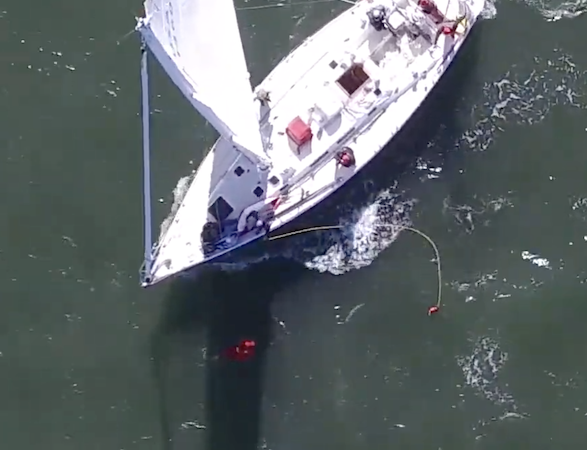On Saturday, May 10, the Storm Trysail Club and Foundation hosted its annual Hands-On Safety at Sea Seminar at SUNY Maritime in the Bronx. Over 100 sailors participated in the US Sailing Level 100 and 200 programs, supported by more than 50 Storm Trysail Club volunteers. Topics included storm sailing, damage control, life raft deployment, onboard firefighting, pyrotechnics, storm sail management, man-overboard (MOB) recovery, and more.
This annual event is widely regarded as one of the premier one-day Safety at Sea seminars in the country—and is the only one that puts participants on the water to practice these critical skills in real-world scenarios.
Though it began modestly, the seminar has become the gold standard in offshore safety training. Here’s how it all began.
Until 1997, Storm Trysail was known primarily as an offshore racing club that hosted top-tier regattas and lively parties (and still does!). But in that year, the Club introduced the Hands-On Junior Safety at Sea Seminar—marking the start of a new chapter in safety leadership.
In 2006, Butch Ulmer and Ralf Steitz adapted that junior hands-on format for adult sailors, hosting the first Hands-On Safety at Sea seminar at Kings Point. A few years later, the venue moved to SUNY Maritime, where it continues to thrive.
Since 1997, nearly 200 adult and junior STC events have trained close to 10,000 sailors in a wide array of offshore safety techniques. In the process, hundreds of STC members have sharpened their skills while serving as coaches and instructors.
Thanks to the generosity of STC members and friends, who have provided hundreds of boats over the years, the Hands-On Safety at Sea curriculum developed by STC has become the foundation for all US Sailing-certified Safety at Sea seminars—approximately 60 are being held nationwide in 2024 alone. Certification from these seminars is now a requirement for many offshore races.
Beyond training, STC’s work in researching and developing MOB equipment and procedures has helped transform offshore safety practices across the sport.
All of these efforts are made possible through the support of the Storm Trysail Foundation.
— Richard du Moulin

